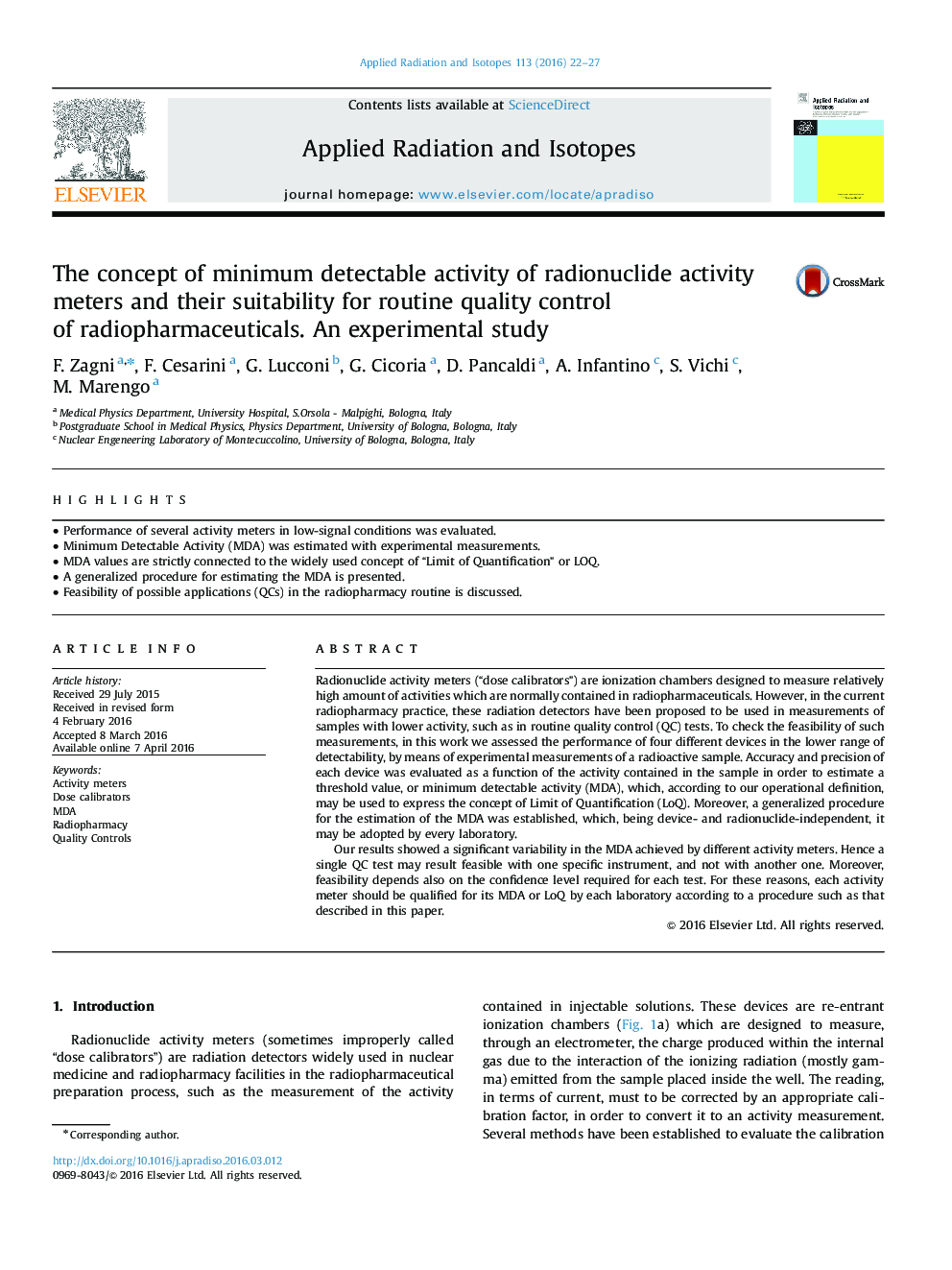| Article ID | Journal | Published Year | Pages | File Type |
|---|---|---|---|---|
| 1875663 | Applied Radiation and Isotopes | 2016 | 6 Pages |
•Performance of several activity meters in low-signal conditions was evaluated.•Minimum Detectable Activity (MDA) was estimated with experimental measurements.•MDA values are strictly connected to the widely used concept of “Limit of Quantification” or LOQ.•A generalized procedure for estimating the MDA is presented.•Feasibility of possible applications (QCs) in the radiopharmacy routine is discussed.
Radionuclide activity meters (“dose calibrators”) are ionization chambers designed to measure relatively high amount of activities which are normally contained in radiopharmaceuticals. However, in the current radiopharmacy practice, these radiation detectors have been proposed to be used in measurements of samples with lower activity, such as in routine quality control (QC) tests. To check the feasibility of such measurements, in this work we assessed the performance of four different devices in the lower range of detectability, by means of experimental measurements of a radioactive sample. Accuracy and precision of each device was evaluated as a function of the activity contained in the sample in order to estimate a threshold value, or minimum detectable activity (MDA), which, according to our operational definition, may be used to express the concept of Limit of Quantification (LoQ). Moreover, a generalized procedure for the estimation of the MDA was established, which, being device- and radionuclide-independent, it may be adopted by every laboratory.Our results showed a significant variability in the MDA achieved by different activity meters. Hence a single QC test may result feasible with one specific instrument, and not with another one. Moreover, feasibility depends also on the confidence level required for each test. For these reasons, each activity meter should be qualified for its MDA or LoQ by each laboratory according to a procedure such as that described in this paper.
